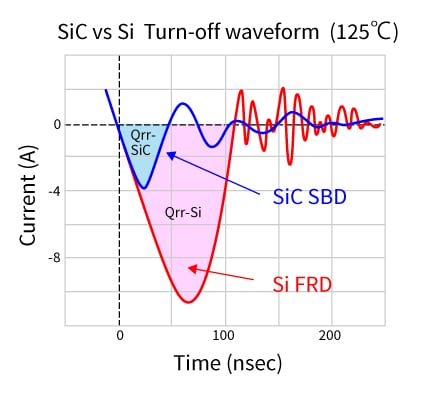- General Top
- SEMICONDUCTOR
- STORAGE
- COMPANY
-
My ToshibaSemicon
- Semiconductor Top
-
ApplicationsAutomotive
Body Electronics
xEV
In-Vehicle Infotainment
Advanced Driver-Assistance Systems (ADAS)
Chassis
IndustrialInfrastructure
BEMS/HEMS
Factory Automation
Commercial Equipment
Consumer/PersonalIoT Equipment
Healthcare
Wearable Device
Mobile
Computer Peripherals
-
ProductsAutomotive Devices
Discrete Semiconductor
Diodes
Transistors
Logic ICs
Analog Devices
Digital Devices
Wireless Devices
※
: Products list (parametric search)
Power SemiconductorsSiC Power Devices
※
: Products list (parametric search)
Isolators/Solid State RelaysPhotocouplers
Digital Isolators
Solid State Relays
Fiber Optic Transmitting Modules
※
: Products list (parametric search)
MOSFETsIGBTs/IEGTsBipolar Transistors※
: Products list (parametric search)
Diodes※
: Products list (parametric search)
MicrocontrollersMotor Driver ICsIntelligent Power ICs※
: Products list (parametric search)
Power Management ICsLinear ICs※
: Products list (parametric search)
General Purpose Logic ICsLinear Image SensorsOther Product ICsOther Product ICs
※
: Products list (parametric search)
-
Design & Development
-
Knowledge
- Where To Buy
- Part Number & Keyword Search
- Cross Reference Search
- Parametric Search
- Stock Check & Purchase
This webpage doesn't work with Internet Explorer. Please use the latest version of Google Chrome, Microsoft Edge, Mozilla Firefox or Safari.
require 3 characters or more. Search for multiple part numbers fromhere.
The information presented in this cross reference is based on TOSHIBA's selection criteria and should be treated as a suggestion only. Please carefully review the latest versions of all relevant information on the TOSHIBA products, including without limitation data sheets and validate all operating parameters of the TOSHIBA products to ensure that the suggested TOSHIBA products are truly compatible with your design and application.Please note that this cross reference is based on TOSHIBA's estimate of compatibility with other manufacturers' products, based on other manufacturers' published data, at the time the data was collected.TOSHIBA is not responsible for any incorrect or incomplete information. Information is subject to change at any time without notice.
require 3 characters or more.
SiC Schottky barrier diodes (SBDs) with low switching loss

An SBD is a unipolar device formed by the junction of a semiconductor with a metal. In principle, SBDs have no reverse recovery time that causes a problem with pn junction diodes. Therefore, SBDs help to considerably reduce the switching loss during turn-off.
A pn junction diode is bipolar as conduction is due to both holes and electrons. The pn junction diode has reverse recovery time since minority carriers (electrons in the case of the p layer and holes in the case of the n layer) remain at the junction during turn-off. In contrast, being unipolar, SBDs do not have reverse recovery time. However, since the depletion region at the junction of a metal and a semiconductor has capacitance, current due to its charging and discharging flows. Although this capacitance is a function of temperature and reverse bias voltage, it is hardly affected in the high-voltage region where typical SiC SBD applications operate.
In addition, this capacitance is a not function of current. Unlike the capacitance of pn junction diodes, it is hardly dependent on current at less than the rated DC current. However, SiC SBDs with an MPS structure might be affected by minority carriers at a current exceeding the rated DC value.
The capacitance of an SBD is calculated as follows:
C(VR) = S x [ ε x q x Nd/{2 x (Vbi + VR)}]^0.5
Vbi: Built-in voltage (= work function of a metal – work function of an n-type (p-type) semiconductor)
S: Junction area, ε: Dielectric constant, q: Unit charge, Nd: Dopant concentration
VR: Reverse bias voltage
Although Vbi is a function of temperature, it is negligible because Vbi << VR.
SiC schottky barrier diodes
Simulation
Related information
Queries about purchasing, sampling and IC reliability
Stock Check & Purchase
require 3 characters or more.
Through this website you are able to proceed to the website of our distributors ("Third Party Website") which is not under the control of Toshiba Corporation and its subsidiaries and affiliates (collectively "Toshiba"). The Third Party Website is made available to you as a convenience only and you agree to use the Third Party Website at your own risk. The link of the Third Party Website does not necessarily imply a recommendation or an endorsement by Toshiba of the Third Party Website. Please be aware that Toshiba is not responsible for any transaction done through the Third Party Website, and such transactions shall be subject to terms and conditions which may be provided in the Third Party Website.

